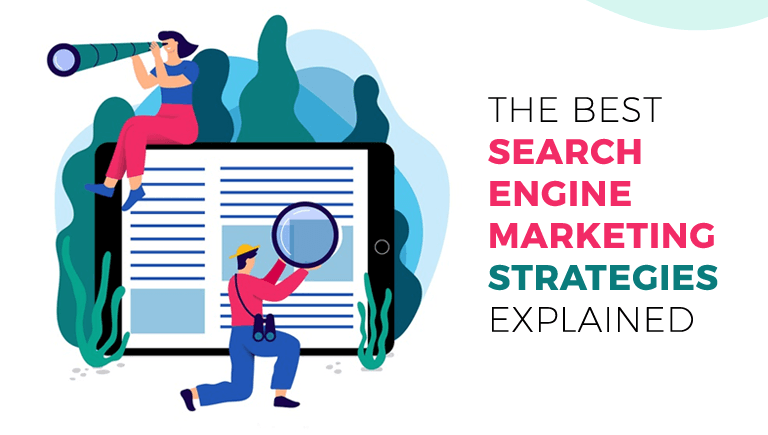Internet users conduct millions of searches on search engines like Google, Yahoo, etc on a daily basis. Every time a brand ranks on a results page, there is a chance to grow as some of these searches are new opportunities for potential customers to find a brand’s website.
The higher a brand’s website ranks in search results, the higher are the chances that potential consumers will click on their website. And eventually, these clicks may turn into leads thereby generating revenue.
Google’s algorithm ranking is based on how helpful a website is to specific search queries, how user-friendly a website is and similar other variables. So if brands want to maximize their search engine visibility, they need to focus on these factors.
One of the most effective ways to grow a business online and promote products and services is through Search Engine Marketing or SEO. Search Engine Marketing strategies are focused on optimising a brand’s visibility on search engines which in turn increases traffic to the website and generates revenue.
Some important strategies for SEM are:
1. Pay-Per-Click (PPC)
Pay-per-click or PPC advertising is an important Search Engine Marketing strategy that allows a brand to gain visibility on search engines like Google, Yahoo, Bing etc. PPC focuses on promoting a brand’s website through paid ads which are based on targeting keywords. PPC ads work on a bidding system.
A brand has to select a target keyword that it wants to display for and then decide how much it is willing to pay every time someone clicks on that ad. When a brand wins the auction for any given keyword, its ad will show up in search results when someone searches for that target keyword.
There are 2 important channels for running PPC ads:
Google Adwords: Adwords uses text ads that are displayed when people search for keywords that are related to a particular brand or product. This helps a brand market its products on Google’s search engine. The advantage of using Google Adwords is that a brand can bid on a series of phrases or keywords they want but only have to pay when someone clicks on their PPC ads. Here are some of the benefits of using AdWords:
- A brand can reach a large number of users through Google Adwords. This provides a number of opportunities for the growth of a brand or business.
- A brand can have full control over their ad. They can decide where and when it should be displayed and how much they will pay per click.
- Budgets are not an issue while opting for Adwords. Brands can work with any selective budget.
- By using Adwords brands can directly reach their target customers if they have successfully chosen the right set of keywords.
Yahoo/ Bing Search Marketing: After Google, the search engine that receives the maximum number of searches each day is Yahoo. Brands need to sign up on Yahoo’s marketing platform to advertise their products or services. It works similarly to Google Adwords. Below are some of its benefits:
Brands can reach a new set of potential clients who do not use Google as their primary search engine.
Yahoo and Bing search engines have high exposure and it is proven that its users spend more time on the Internet than an average user.
Since users spend more amount of time here, therefore there are greater chances for conversion.
This is cheaper than Google Adwords as the competition is less.
2. Ad Copy of the Product/ Service
Attracting users is an important task for a brand. Therefore the ad copy should be such that it gains the interest of the customers.
3. Search Engine Optimizatioz
Search Engine Optimization is an organic marketing technique which helps a website gain high position or rank on search engines like Google or other SERP like Yahoo, Bing etc. It comprises both technical and creative elements to improve the ranking, drive traffic to the website and increase visibility on search engines.
There are two methods of SEO which help improve the position of website on SERP:
On-page SEO: On-page SEO refers to all that is done on the website like meta descriptions, meta tags, headings, content, images, keyword optimization, internal linking, Alt attributes, URL structure, domain names, sitemaps and schema. In short, on-page SEO means structuring and developing the website to be search engine friendly.
Off-page SEO: Off-page SEO assists in increasing the popularity of the website to get more visibility. These techniques help improve a website’s position on SERP. Some of these off-page SEO strategies include guest posting, keyword research, image submission, social bookmarking, web 2.0, press release, directory submission and Google my business.
Brands use this off-page method for the purpose of effective link building which helps in adding backlinks for ranking websites. Brands usually optimize their websites by using external website links through successful link building.
The correct SEM strategies provide an improved and better position to websites and visibility on SERP through both paid and organic searches. To know more about Search Engine Marketing strategies, leave us a message and we will get back to you.





